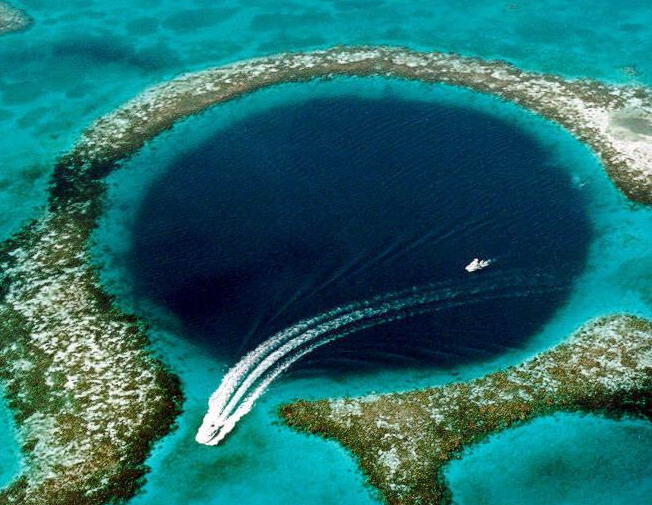
Blue holes, physically, are hazardous due to their structure and depth. Their surrounding walls cause bad water circulation, meaning the water is generally depleted of oxygen. Their depth needs specialized training. Nitrogen narcosis will be common. The disorientation which results could lead to divers behaving recklessly and could cause them to remain down longer than the oxygen supply will allow.
Despite these dangers, or maybe due to them, these blue holes are extremely popular amongst scuba divers:
• In Lighthouse Reef, Belize, there’s the Great Blue Hole that’s nearly round and will be all but surrounded by a system of Lighthouse Reefs. The blue hole’s wa lls display stalactite formations that’re angled to permit scuba divers to swim underneath them. Water within this hole will be extremely still. Visibility oftentimes rises up to two-hundred feet. Because of its depth, 145 meters, scuba diving the hole will be solely advised for expert scuba divers, yet the encompassing reef will be great for recreational and novice divers.
• Blue Hole within the Red Sea will be thought to be the more hazardous of the blue holes to scuba dive and has been referred to as the “Diver’s Cemetery.” The danger derives from the tunnel referred to as the Arch, that links the hole toward the open water and will be about 52 meters under the surface.
• The Dean’s Blue Hole will be the deepest within the world. It is located west of Clarence Town within the Bahamas and is 202 meters below the surface. It’s a favorite amongst free divers and within April of 2010, William Trubridge broke the diving world record as he got to 92 meters.
If you are searching for something exotic and new to attempt on your vacation, attempt scuba diving one of these blue holes. Their beauty is rare to visualize and they are thrilling.

